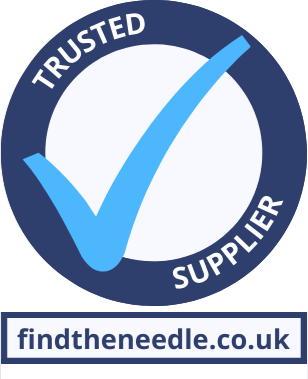Boosting Efficiency: Unique Ways to Leverage Data Analysis in Procurement
- 03 Jan 2025
- Articles
Making informed decisions in procurement can be the difference between staying competitive and falling behind. Many organisations still rely on outdated methods, leading to wasted resources and missed opportunities. Harnessing the power of data analysis can uncover actionable insights that directly enhance procurement processes. Integrating data analysis into operations allows you to streamline workflows, identify cost-saving opportunities, and drive better business outcomes.
Data analysis assists in identifying trends and enables predictive decision-making. With effective methodologies, procurement teams can shift from reactive to proactive strategies, ensuring that every purchase contributes to organisational objectives. This article explores unique use cases of data analysis in procurement, providing valuable insights to help organisations thrive.
Understanding Procurement Metrics and Their Importance
Understanding relevant metrics is a key aspect of efficient procurement. Tracking performance indicators—such as cost per order, supplier lead times, and purchase order cycle times—allows businesses to assess their procurement strategies critically. Data analysis reveals patterns in these metrics, helping teams identify areas for improvement.
For instance, if data indicates that a particular supplier consistently has delayed deliveries, it may prompt renegotiation of terms or exploration of alternative suppliers. Monitoring spending data uncovers opportunities for strategic sourcing, facilitating better pricing negotiations and contract management.
Integrating ERP software for installers can enhance metrics tracking by centralising data, making it easier to analyse performance across various suppliers. By implementing robust data analysis practices, organisations remain aware of their procurement performance and can adapt accordingly.
Embracing data-driven thinking is essential. Procurement staff should regularly review performance metrics, leading to informed decision-making and enhanced efficiency. Each team member should be trained to interpret data effectively, empowering them to share insights influencing the strategy.
Enhancing Supplier Relationships through Data Insights
Strong supplier relationships are essential for efficient procurement. Data analysis enhances these relationships by promoting transparent and constructive communication. Sharing relevant data and insights with suppliers allows businesses to work together to resolve issues and optimise processes.
For example, if analysis reveals that a specific supplier is responsible for a disproportionate amount of late deliveries, this insight can prompt a collaborative discussion. Procurement teams can present data showing the impact on operations and discuss potential solutions to improve reliability.
Additionally, assessing supplier performance through data creates a more competitive advantage. By comparing supplier metrics, companies can drive better performance across the board. Sharing benchmarks and encouraging suppliers to improve fosters healthier relationships while contributing to a more agile supply chain.
Setting up regular review meetings with suppliers where data insights can be shared is essential. Prioritising transparency and collaboration helps build stronger, more effective supplier partnerships.
Engaging in Supplier Performance Reviews
Regular supplier performance reviews based on data findings are crucial for maximising procurement efficiency. Establishing key performance indicators (KPIs) for suppliers ensures alignment of goals, allowing both parties to track performance accurately. Common KPIs include order accuracy, delivery timelines, and pricing competitiveness.
During these reviews, procurement teams can present comprehensive reports on supplier performance, identifying areas for improvement while recognising excellence. This encourages suppliers to strive for higher standards, fostering a culture of continuous improvement on both sides.
Involving suppliers in the analysis process enhances collaboration. When suppliers understand how their performance is evaluated, they can make informed adjustments to meet expectations better. This mutual engagement streamlines procurement operations and builds trust between companies and suppliers.
The Role of Predictive Analytics in Procurement Strategy
Predictive analytics offers a transformative approach to procurement. It allows businesses to forecast future needs based on historical data. By analysing trends, organisations can anticipate changes in demand, identify potential disruptions, and proactively adjust procurement plans.
For instance, if data analysis indicates a seasonal spike in demand for a particular product, procurement teams can preemptively stock up or secure contracts with suppliers to avoid shortages. This foresight ensures a smoother supply chain and safeguards against potential revenue losses due to unfulfilled orders.
Additionally, predictive analytics aids in understanding market trends, enabling procurement strategies to align effectively. If analysis suggests rising prices for raw materials, businesses can lock in prices beforehand, mitigating risks and ensuring budget stability.
Organisations must invest in strong data strategies and employee training to implement predictive analytics effectively. Cultivating a forward-thinking culture empowers procurement teams to stay ahead of potential challenges.
Inventory Management and Predictive Analysis
Predictive analytics plays a significant role in inventory management. Procurement teams can maintain optimal inventory levels by analysing historical sales data and forecasting future demand patterns. This reduces the risk of overstocking or stockouts, which can disrupt operations.
For example, if data shows a consistent decline in sales for a particular product, procurement teams can adjust future orders accordingly, freeing up capital for other uses. Understanding demand trends enables smarter purchasing decisions, leading to significant cost savings.
Predictive analytics can also identify the best times to purchase items, allowing procurement teams to capitalise on lower prices or promotional offers. This strategic approach to inventory management enhances overall procurement efficiency.
Driving Continuous Improvement through a Data-Driven Culture
Creating a culture of continuous improvement within procurement teams is essential for sustaining efficiency gains. Fostering an environment where data-driven decision-making is the norm ensures that organisations always strive for better outcomes.
Encouraging staff to utilise data analysis in their daily tasks can lead to innovative approaches that enhance procurement processes. Regular training sessions on data interpretation and analytical skills equip team members with the tools to spot trends and opportunities, boosting individual performance.
Developing Cross-Functional Teams for Broader Insights
Forming cross-functional teams can further enhance the data-driven culture. When individuals from different departments—such as finance, operations, and sales—collaborate on procurement initiatives, diverse perspectives enrich data analysis. This holistic approach ensures procurement decisions align with broader organisational goals.
Cross-functional teams facilitate the sharing of insights and best practices across departments. For instance, if the sales team notices a shift in customer preferences, sharing this information with procurement allows for more informed purchasing decisions.
Implementing regular cross-departmental meetings fosters open communication and helps break down silos within the organisation. By prioritising a data-driven culture across all business areas, companies can reap the benefits of enhanced efficiency in procurement, ultimately leading to greater success in meeting organisational goals.








